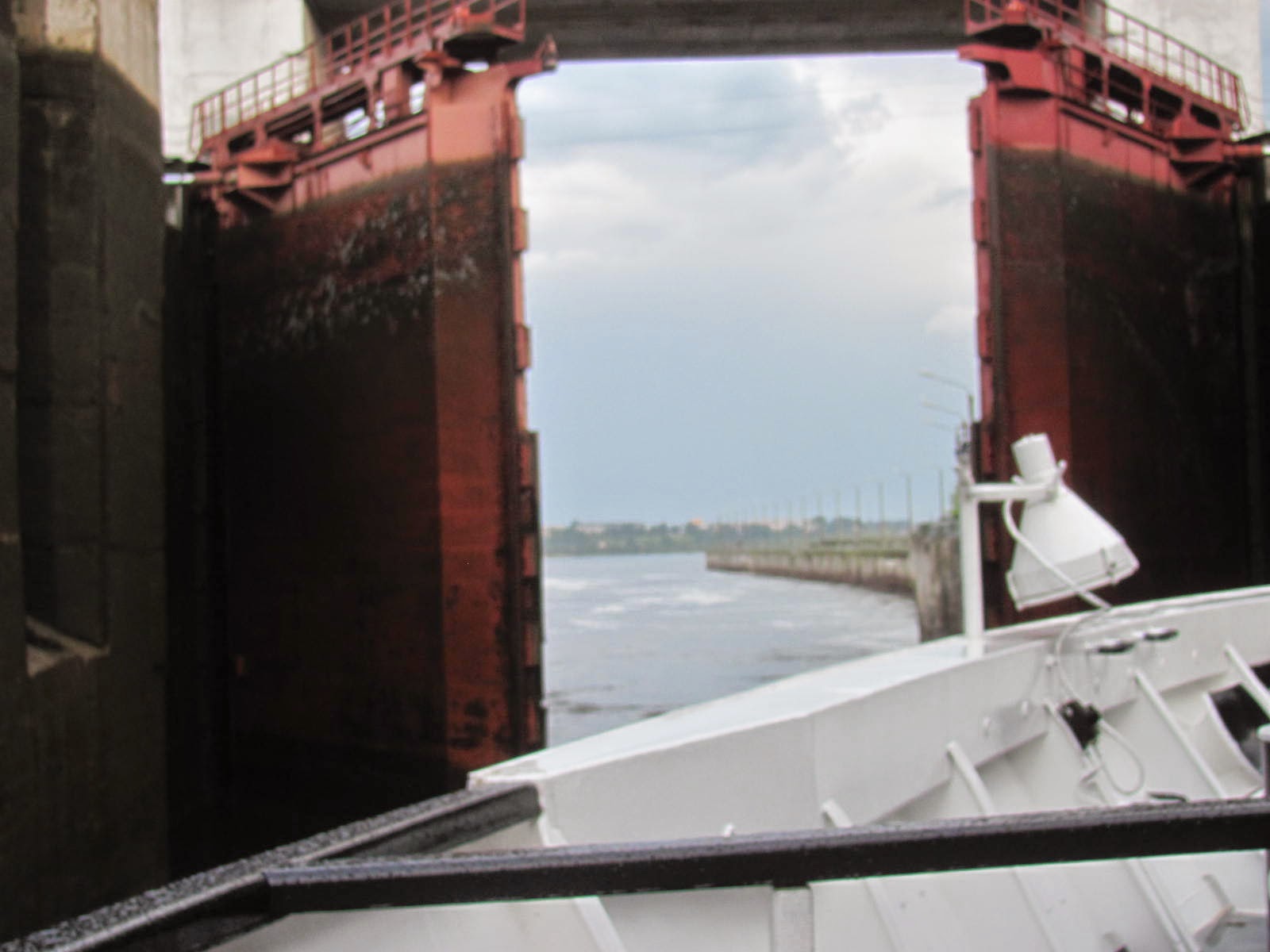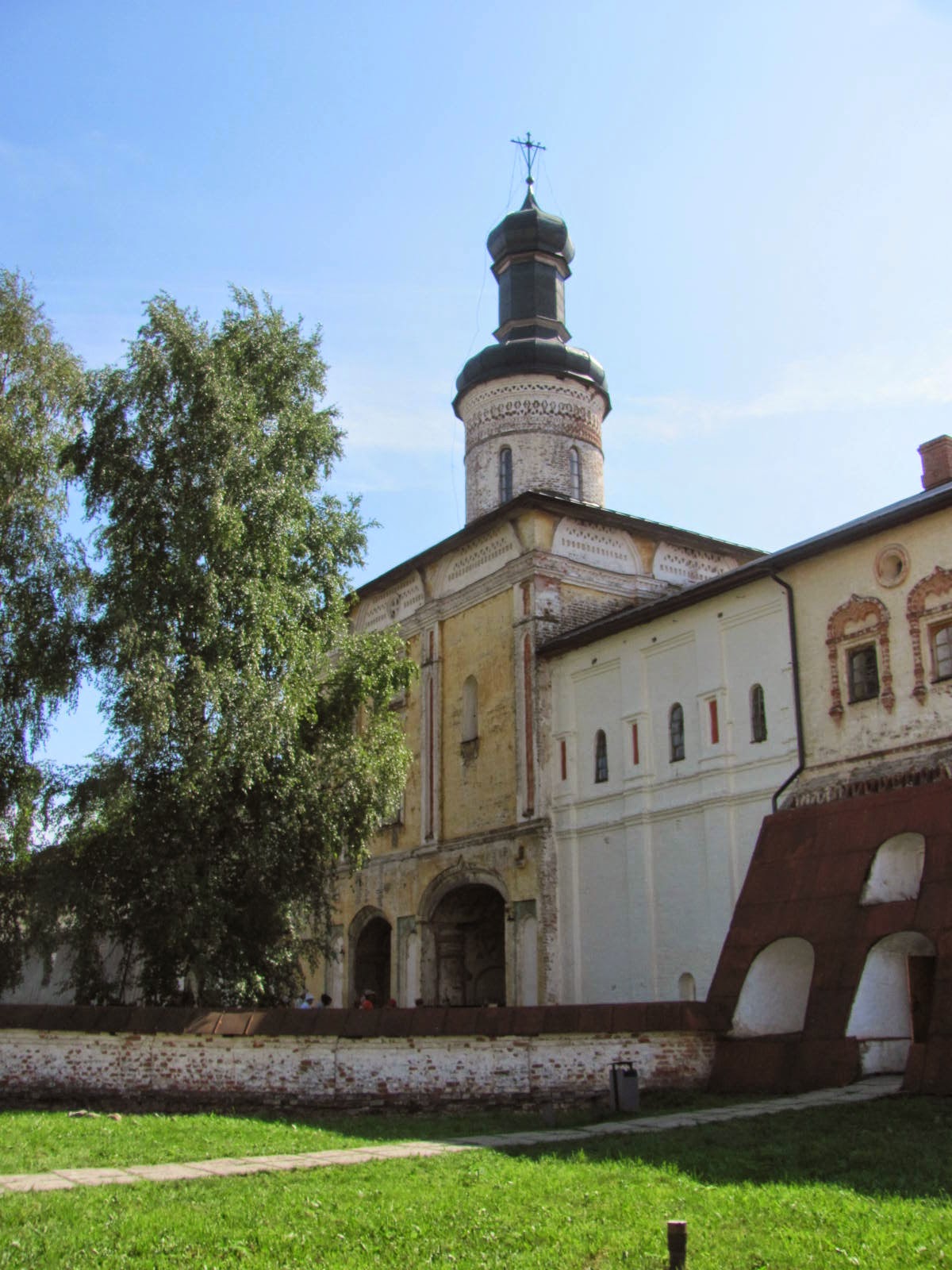And finally, we are at Red Square
Saturday, July 26, 2014
Moscow
We docked in Moscow about 1:30PM today. I had the opportunity to take the Metro to Revolution Square and walk to Red Square. On the way, we stopped at several Metro stations, just to look at them. Many are architectural works of art:
And finally, we are at Red Square
And finally, we are at Red Square
Submerged Churches
When the Volga Dam was built, the river level rose and towns were submerged. We passed two submerged chuches. The first was just a little too close to the shoreline. The second had such a tall spire, its belfry can still be seen above the water.
Flower Beds of Russia
This one is for my gardening friends. I have noticed that there are flower beds everywhere in Russia -- in the cities, along the sidewalk, in small towns. It is so nice to see these bright spots everywhere. My guess is that it's impossible to grow flowers in the winter, so there are many more in the summer, just to enjoy. And here are some examples:
Wednesday, July 23, 2014
9. The lock of Shecksna
Oh, this lock is very exciting because it is the first one where the water level drops. So far, all of the gates in front of us have gone up and down, because they were on the 'uphill' side of the lock. Today, though, we are going 'downhill', and so we have a lock in front of us that begins with very little showing (because the lock is full of water). As the water is drained from the lock, the doors appear larger and larger in front of us, and then they open inwards.
Just so you know, I went to great lengths to get these photos, as it was raining this evening.
Just so you know, I went to great lengths to get these photos, as it was raining this evening.
Locks Time Six
Yesterday was the Day of the Locks. We passed though six locks in a
row -- very exciting for me. I took photos of every one, and scurried
around the boat, looking at the closing, the opening, the filling of the
lock (so far, we have been going up, so the locks have all filled).
OK. I won't make you look at photos of EVERY lock...
This canal system was initially built in the 1700's by Peter the Great, and of course have been modernized through the centuries. Ships were coming through the locks continually through the afternoon and evening.
The good news: we have more locks coming up in the next few days!!
 | ||||||||||||||||||||
| Lock #2 -- see the number on the tower? |
OK. I won't make you look at photos of EVERY lock...
This canal system was initially built in the 1700's by Peter the Great, and of course have been modernized through the centuries. Ships were coming through the locks continually through the afternoon and evening.
The good news: we have more locks coming up in the next few days!!
Kirillo-Belozersky Monastery
This is claimed to be the largest monastery in Europe and Russia, and dates back to the 14th century. One side faces out over a lake, and the grounds are surrounded by a wall. There are numerous chapels and churches. The main entrance is lined with frescos.
The monastery was de-consecrated during Soviet times, but since 1999 it has been a monastery again, with six residents. At its largest, back in the 16th century, there were over 200 monks living here.
The monastery was de-consecrated during Soviet times, but since 1999 it has been a monastery again, with six residents. At its largest, back in the 16th century, there were over 200 monks living here.
 | ||
| I added this as an example of Russian construction worker conditions. | They are apparently restoring an onion dome. |
Tuesday, July 22, 2014
Kizhi
This is a pleasant little island, an open-air museum with almost 80 historical structures brought from the surrounding area. It is a World Heritage site. There are two spectacular churches from the 18th century. One has 22 domes, the other merely nine.
The domes are covered in hand-hewn birch shingles. They are particularly pretty because they change color in the sunlight. This morning they appeared to be silver where the sun hit them directly.
There was an ongoing demonstration of shingle-making, made with an axe. We were told that saws damage the wood, so only axes are used for making shingles as well as making boards.
There are a total of four churches, a farmhouse with
attached barn, a traditional sauna, a wind-powered grain mill.
I was especially interested in flax. Becausse we arrived in
the morning, the flax was in bloom. There were the various tools used to
prepare flax for spinning into linen thread for ultimately weaving into cloth. Historically, sails were linen, as well as some clothes.
 |
| Flax, blooming in the morning sun. |
 |
| dried flax |
 |
| Flax preparation tools |
 |
| Spinning with distaff holding wool on the spinners left. |
A young woman demonstrated spinning in the farmhouse. (Those of you who are not interested in spinning might want to hop to the next paragraph.) The traditional spinning
method involved the usual combing, but then they used a decorated board with a
flat bottom that the spinner would sit on to hold it in place. (It was called a distaff, which is a term
I have only heard used with flax spinning). The combed wool was placed under a
set of straps, and the wool was pulled from the distaff, and spun on a spindle
that is just a short turned rod – there is no whorl on it.
The island was beautiful in the summer sunshine, surrounded
by the water of Lake Onega on all sides. The ocal communities were farming
communities, but now there are no permanent residents.
And by the way, Lake Onega is the second-largest in Europe -- 40 miles across!! for three to four hours today, we couldn't see any shore at all.
Subscribe to:
Comments (Atom)





.JPG)












































